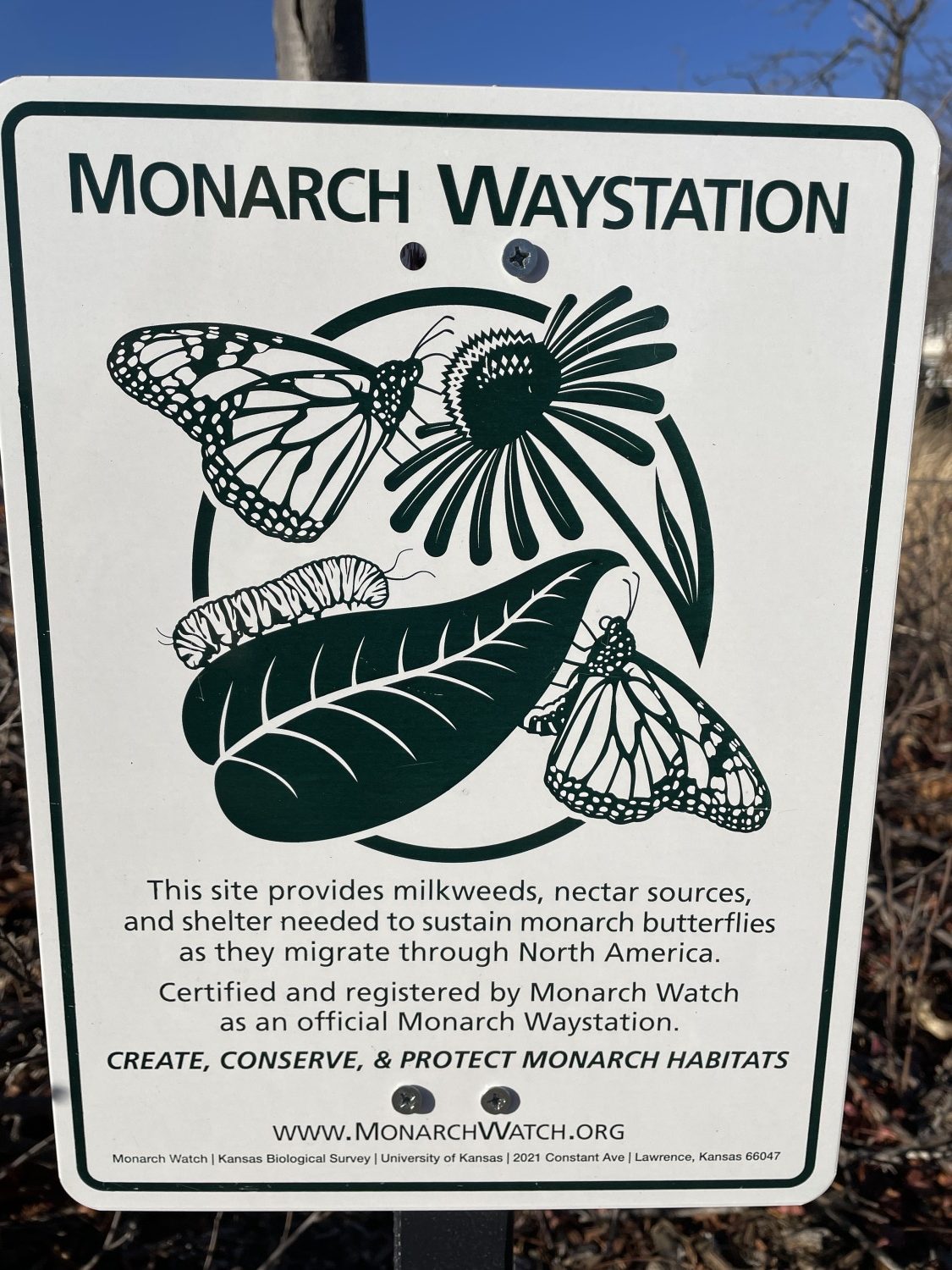

Posted on December 1, 2022
Did you know that Carol Stream has been on the annual Monarch butterfly’s migration route of thousands of miles from Mexico to Canada? Did you also know that over the last three decades, the monarch butterfly population has decreased by more than 80%, designating the beautiful insect an endangered species? The decrease is due to climate variations and the use of herbicides in the US that kill the milkweeds essential for the butterfly’s reproduction.
What is Carol Stream Park District doing to save the monarch butterfly? At the Park Board of Commissioners meeting on December 12, the Board passed Resolution 22-05, authorizing the Executive Director to enhance and expand available habitat for monarch butterflies and other native pollinators with, but not limited to, the following actions:
Carol Stream Park District
Resolution No. 22-05
DuPage Monarch Project
A Resolution Authorizing the Executive Director to Enhance and Expand Available Habitat for Monarch Butterflies and other Native Pollinators.
WHEREAS, the Carol Stream Park District recognizes the importance of protecting open land and park space for the recreational use of Carol Stream residents; and
WHEREAS, a wet area located inside the large dog area at the Bark Park was transformed from turf grass to a Monarch Butterfly Weigh Station with additional native plantings; educational signage was added in 2019 and the area has received ongoing management; and
WHEREAS, the parking lot islands at the Simkus Recreation Center have been designated monarch butterfly weigh stations and subsequently planted with milkweed and signage was added in 2022 to denote the weigh stations; and
WHEREAS, Jan Smith Park continues to be the model of the District’s native areas by bringing together volunteers and District staff to create a well maintained showcase area for the residents of the District to enjoy; and
WHEREAS, a Natural Area Master Plan is being put together for Park District properties to guide the maintenance, construction and overall management of native areas; and
WHEREAS, many of the 4,000 species of native U.S. bees providing critical pollinating services to food, ornamental and wildflower species have experienced significant decline; and
WHEREAS, the Carol Stream Park District, located in northeastern Illinois, has long been on the annual monarch butterfly’s migration route of thousands of miles from Mexico to Canada and has provided monarch caterpillars with native milkweed species, their sole source of food; and
WHEREAS, Illinois designated the iconic monarch butterfly as the official state insect in 1975 as the result of lobbying by Illinois schoolchildren; and
WHEREAS, scientific studies point to the rapid decline of the monarch butterfly due to the loss of milkweed habitat needed for laying their eggs and for the caterpillars to eat, resulting from development, land management practices, and chemically-aided agriculture in the United States and Canada; and
WHEREAS, because the decimation of pollinators, including the eastern migrating monarch, which serves as an iconic species, has potential negative consequences for natural ecosystems as well as for human food production, in 2020, the U.S. Fish and Wildlife Service found that adding the monarch butterfly to the list of threatened and endangered species was warranted but precluded by work on higher-priority listing actions. With this decision, the monarch becomes a candidate for listing under the Endangered Species Act (ESA), and its status will be reviewed each year until it is no longer a candidate; and
WHEREAS, the Mid-America Conservation Strategy has identified a monarch habitat restoration target of an additional 1.3 billion stems of milkweed by 2038 which will sustain a resilient population size; and
WHEREAS, the Illinois Monarch Project developed a state-wide monarch conservation plan calling for 150 million new stems of milkweed, Illinois’ share of the Mid-America Conservation Strategy; and
WHEREAS, because there are many different species of milkweed in the U.S., it is important to recognize that only native milkweed is vital to the recovery and survival of the monarch butterfly in Illinois; and
WHEREAS, the Forest Preserve District of DuPage County, River Prairie Group of the Illinois Sierra Club, The Conservation Foundation, and Wild Ones of Greater DuPage, a native plant advocacy group, are collaborating as the DuPage Monarch Project to encourage communities to plant native milkweed and valuable nectar plants where appropriate;
NOW THEREFORE BE IT RESOLVED BY THE BOARD OF PARK COMMISSIONERS OF THE CAROL STREAM PARK DISTRICT, DuPage County, Illinois, as follows:
SECTION 1: The Recitals set forth above are incorporated herein and made a part of this Resolution as if set forth fully herein.
SECTION 2: The Board of Park Commissioners hereby authorizes the Executive Director to increase and improve available habitat for Monarch butterflies and other native pollinators with, but not limited to, the following actions:
SECTION 3: This Resolution shall be effective immediately upon its passage and approval by a majority of the Board of Commissioners.
Dated:
Board President of Carol Stream Park District
ATTEST:
Secretary of Carol Stream Park District